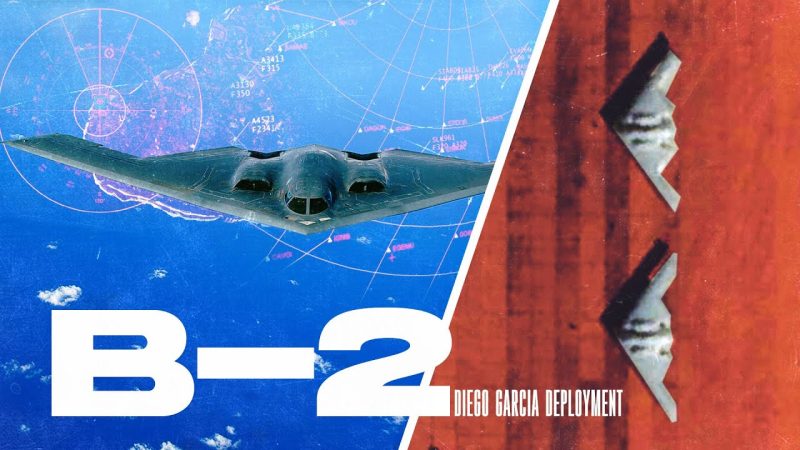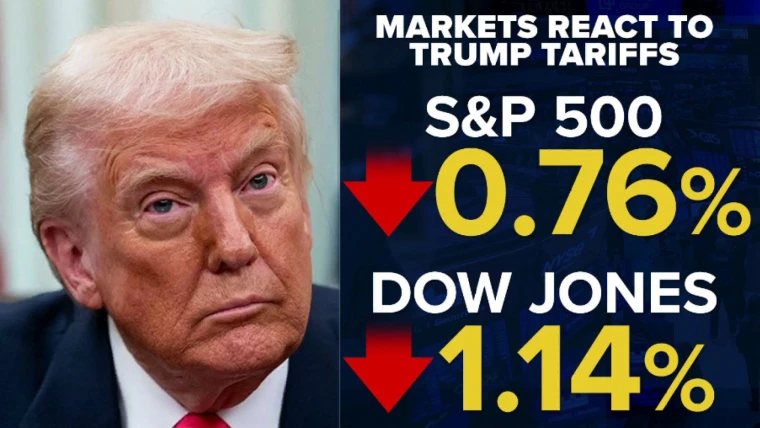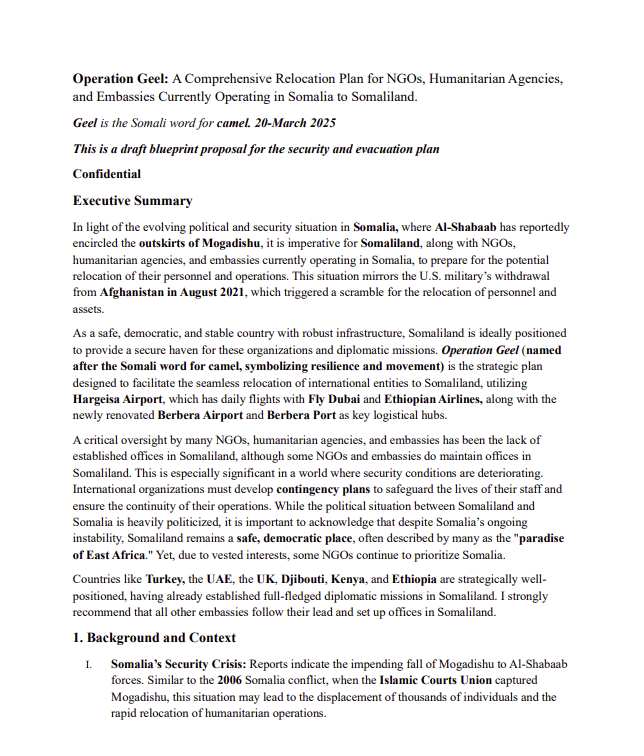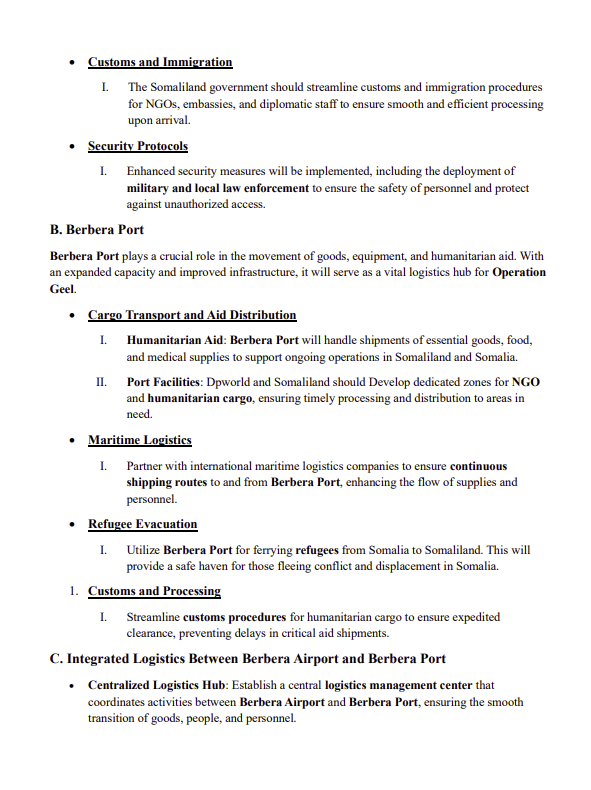ASSESSMENTS
Sudan: U.S. Withdraws Nonessential Staff Amid Escalating Tensions

As clashes intensify in South Sudan, the U.S. State Department takes decisive action, ordering nonemergency personnel to evacuate amidst fears of a collapsing peace agreement.
The recent directive from the U.S. State Department to evacuate nonemergency government personnel from South Sudan marks a significant escalation in the country’s ongoing security dilemma. This move underscores the fragile nature of the peace that has teetered on the brink of collapse since its establishment in 2018 between President Salva Kiir and his former adversary, now Vice President, Riek Machar.
The roots of the conflict, which originally erupted in 2013, are deep and complex, involving a web of ethnic tensions, political rivalries, and a battle for control of the country’s oil-rich regions. The peace agreement of 2018, which temporarily halted the civil war that claimed over 400,000 lives, is proving insufficient to maintain stability as old grievances resurface and new conflicts emerge.
The immediate cause of the heightened tensions was an armed confrontation last Tuesday, where an armed group clashed with the national army, leading to high-profile arrests including two government ministers and a deputy army chief, all allies of Vice President Machar. The incident highlights the volatile power dynamics within the nation’s leadership, suggesting a deep-seated mistrust and power struggle that continues to simmer beneath the surface.
Moreover, the security situation was further complicated by an attack on a U.N. helicopter during an evacuation mission in the north of the country, an act the U.N. Commission on Human Rights in South Sudan labeled as a potential war crime. This attack not only represents a direct challenge to international efforts to stabilize the region but also signifies the potential for conflict to spiral into broader regional instability.
The U.S. government’s decision to pull out nonessential personnel reflects a pragmatic approach to safeguarding its citizens and interests, acknowledging the limited influence external actors have in stemming the tide of violence. It also sends a stark message about the deteriorating situation on the ground, serving as a bellwether for potential international responses.
The evacuation coincides with a stern warning from the U.N. Commission on Human Rights in South Sudan, which has expressed serious concerns that the current violence and political tension in the capital, Juba, could derail the fragile peace process. The Commission’s chairperson, Yasmin Sooka, emphasized the need for South Sudanese leaders to urgently return their focus to the peace process, uphold human rights, and steer the country toward a stable democracy.
This unfolding crisis in South Sudan not only threatens the lives and well-being of its citizens but also poses a significant risk to regional stability. The international community, particularly entities with vested interests in the Horn of Africa, will need to reassess their strategies and possibly intensify their diplomatic and humanitarian efforts to prevent a full-scale resurgence of civil war.
As South Sudan stands at this precarious juncture, the actions of its leaders in the coming days will be critical. The international community, along with South Sudan’s own citizens, will be watching closely, hoping that this latest chapter does not revert the country back to the dark days of widespread conflict and despair.
ASSESSMENTS
Houthis Escalate Drone War on U.S. and Israel as Trump’s Iran Strategy Nears Showdown

The Pentagon is surging power into the region, deploying two nuclear-capable aircraft carriers—the Truman and Carl Vinson—along with six B-2 stealth bombers stationed at Diego Garcia. This is not routine presence—it’s battlefield posturing, and everyone knows it.
The Red Sea is boiling again—and the Houthis are turning it into a proxy battleground for Tehran’s defiance. In a chilling announcement that confirms the new escalation phase in the Middle East, Houthi spokesman Yahya Saree declared that the group launched drone attacks on an American aircraft carrier and an Israeli military site in Tel Aviv. The strikes came just days before crucial U.S.-Iran talks are set to begin in Oman—talks that now risk being overshadowed by drone smoke and explosive headlines.
The timing couldn’t be more deliberate. Iran’s terrorist proxy isn’t simply targeting enemies; it’s sending a message: “Gaza is on fire, and we’re turning up the heat.” Whether the Houthis actually hit their targets is almost secondary to the narrative they’re crafting: Iran’s reach is long, lethal, and growing bolder. The symbolism of striking Tel Aviv and a U.S. carrier—the USS Harry S. Truman, no less—is meant to humiliate, provoke, and redefine deterrence in Tehran’s favor.
But Washington isn’t blinking. The Pentagon is surging power into the region, deploying two nuclear-capable aircraft carriers—the Truman and Carl Vinson—along with six B-2 stealth bombers stationed at Diego Garcia. This is not routine presence—it’s battlefield posturing, and everyone knows it.
The State Department’s re-designation of the Houthis as a Foreign Terrorist Organization in early March wasn’t a symbolic move. It was a legal signal to allies and commercial operators alike: Stop fueling the Houthi war machine or face U.S. wrath. But the terror group has only doubled down, daring the Americans to react, and banking on Iran’s air cover—both literal and diplomatic.
And here’s the real danger: Iran is using its proxies to shape the narrative and field-test American resolve ahead of indirect negotiations. If Washington negotiates from a place of hesitation, the Iranian regime wins twice—once at the table and once on the battlefield.
These drone attacks are not just Yemen’s rebellion. They are Tehran’s fingers pressing buttons 1,000 miles away. And while the U.S. is bracing with firepower, the window for effective deterrence is narrowing. Any misstep could push the Red Sea from proxy arena to all-out war theater.
In Tehran’s eyes, the Houthi attacks are a diplomatic opening act. For Washington, they’re a warning shot. And for Israel, they’re proof that the battlefront now stretches from Rafah to Oman to the Red Sea.
This is no longer a regional scuffle. This is Iran’s long game—and Trump’s test of will.
ASSESSMENTS
Trump’s Tariff Whiplash: China Faces 125% Blow as World Gets 90-Day Reprieve

As Trump slaps brutal tariffs on China, the rest of the world gets a temporary pause—but chaos reigns and trust in U.S. trade policy crumbles.
Trump shocks markets by pausing global tariffs for 90 days—except for China, which now faces a staggering 125% levy. Analysts warn the erratic trade policy leaves allies reeling and the global economy on edge.
The White House hit the brakes on a global trade war—then floored the gas pedal straight into Beijing. President Trump’s chaotic tariff reversal spared most of the world with a 90-day reprieve, but not China, which now faces a backbreaking 125% tariff wall. The message? If you’re not with me, you’re the enemy—and right now, China is public enemy number one.
Trump’s dramatic pivot came after days of financial panic and political pressure. Market freefall, corporate uproar, and Republican warnings of economic ruin finally forced his hand. “People were getting a little yippy,” he said with a smirk, trying to spin his backtrack as master-level negotiation. But the reality is far messier—and far more dangerous.
This is no trade strategy. It’s power politics laced with economic roulette. Trump spared Europe, Japan, and South Korea from immediate punishment, but kept a 10% “reciprocal” tariff in place while threatening worse. China, however, got the full blast. Their counter-tariffs—already at 84%—will now hit back hard, especially with the U.S. showing no signs of stepping down.
Beijing responded with fury, slapping restrictions on 18 U.S. defense firms and ramping up its rhetoric. EU states, meanwhile, voted to hit back with €21 billion in countermeasures. But for Trump, it’s all part of the “art of the deal,” where chaos is leverage and uncertainty is a feature—not a bug.
Even his own trade officials were blindsided. Treasury Secretary Scott Bessent emerged as the architect of the China-first pressure campaign, leaving U.S. Trade Rep Jamieson Greer scrambling mid-hearing. This isn’t just dysfunction—it’s proof that America’s trade policy is being typed out in real time, tweet by tweet, from the Oval Office.
Trump’s unpredictability is now the most predictable feature of global economics. Allies no longer trust U.S. commitments. Markets react not to policy, but to presidential mood swings. And China—targeted, cornered, and now furious—has little incentive to cooperate.
In this game of economic brinkmanship, Trump may call it leverage. But for the rest of the world, it looks like self-inflicted chaos—and China may not blink.
ASSESSMENTS
Oil Crashes as Trump’s Tariff Tsunami Roils Global Markets

Crude prices plunge nearly 3% after Trump’s sweeping new tariffs spark fears of a global slowdown and dampened oil demand.
Oil prices tumbled nearly 3% as U.S. President Donald Trump’s aggressive new tariff strategy stoked fears of a global trade war, raising concerns about weakened economic growth and reduced oil demand.
Trump’s Tariff Gambit Triggers Global Oil Shock
The oil markets just got hit with a dose of Trump shock therapy—again.
Crude prices plummeted nearly 3% Thursday after U.S. President Donald Trump announced sweeping reciprocal tariffs on dozens of America’s biggest trading partners. While oil itself is exempt from the tariffs, the implications are seismic: a looming trade war that threatens to strangle global growth and crush demand for crude.
Brent crude fell $1.97 to settle at $72.98, while WTI plunged $1.98 to $69.73, erasing the prior session’s gains in a sharp reversal tied directly to Trump’s press conference.
“Trade, economic growth, oil demand—it’s all connected,” said Bjarne Schieldrop, chief commodities analyst at SEB. “We’re looking at a storm coming. We just don’t know how bad it will get yet.”
Despite the exemption of oil, gas, and refined products from the tariff list, markets are clearly pricing in wider macroeconomic risk. Analysts warn that higher inflation, slower GDP, and retaliatory measures from China, the EU, and others could be a triple threat for crude consumption.
Making matters worse, U.S. crude stockpiles surged by 6.2 million barrels last week, according to the Energy Information Administration—a shocking jump compared to forecasts of a 2.1 million-barrel draw. That inventory build has reinforced bearish sentiment in a market already rattled by geopolitical tension, supply chain disruptions, and uncertainty over central bank moves.
With Trump’s “America First” trade crusade now officially aimed at the globe, markets are bracing for the fallout. Oil is the first to wobble—but it won’t be the last. If the tariffs cascade into a full-blown trade war, the world could be staring at a perfect storm: rising prices, slowing growth, and sinking energy demand.
The question now isn’t just how low oil can go—but how long the world can afford this kind of economic brinkmanship.
ASSESSMENTS
Will France’s Far-Right Icon Wreck the Republic on Her Way Out?

Marine Le Pen’s Conviction Could Ignite Political Chaos in France as She Eyes Revenge Over Restraint.
Marine Le Pen’s ban from France’s 2027 presidential race following a guilty verdict for embezzlement throws the country into political limbo. Will she step aside peacefully—or torch the system that condemned her?
Marine Le Pen has spent over a decade carefully scrubbing the extremist stains off her family’s political legacy. But with a guilty verdict hanging over her head and a five-year ban from running for office, France’s far-right titan now faces a Shakespearean decision: sacrifice herself for her protégé or set the stage on fire on her way out.
The verdict, branding Le Pen guilty of embezzling EU funds, is more than a personal legal blow—it’s a political grenade lobbed into the heart of France’s fragile democracy. And Le Pen, furious and humiliated, may be tempted to detonate the whole system in retaliation.
In true populist fashion, she’s already painting herself as a victim of a politically weaponized judiciary—echoing the same playbook used by Donald Trump. Her remarks reek of defiance, not remorse. She may not be storming courthouses yet, but her rhetoric is growing radioactive: authoritarian, indignant, and soaked in martyrdom.
The real question isn’t whether Le Pen will appeal—she will. It’s whether she’ll use her immense popularity and loyal party base to declare war on the French establishment. Because if she does, the very institutions she once claimed to uphold will become her battlefield.
And then there’s Jordan Bardella—the polished, youthful heir she’s groomed as her successor. But the kid’s no Le Pen. His recent blunders abroad and shaky solo performances reveal a man not yet forged for presidential war. Can he really channel the fury of disillusioned voters in a post-Le Pen France? Or will the far right splinter without its iron-willed matriarch at the helm?
There’s blood in the water, and France’s political predators—on the left and the mainstream right—can smell it. They’ll pounce if Le Pen falters or if Bardella stumbles. But make no mistake: Le Pen’s next move will define the trajectory of French politics. A scorched-earth campaign could rally her base and bring down Macron’s already brittle government. Or it could destroy everything she’s built.
Le Pen once promised to civilize the far right. Now, with her political life on the line, she might just revert to the wrecking ball her enemies always feared she was. France is bracing for impact.
ASSESSMENTS
Operation Geel Exposes the Truth: International Community’s Reluctance to Embrace Somaliland as a Strategic Ally

Exposing the Lies: Operation Geel and the Crisis of Global Indifference — The world continues to overlook Somaliland’s pivotal role in the Horn of Africa. As Somalia crumbles, why are international organizations hesitant to move their operations to a stable, sovereign Somaliland? Why the International Community Continues to Ignore Somaliland Amid Somalia’s Collapse
As Somalia’s government teeters on the brink of failure, international actors, including humanitarian agencies and foreign embassies, are scrambling to find a safer base of operations. Operation Geel, a recently unveiled plan, highlights the stark reality of the situation: despite the escalating crisis in Somalia, the international community refuses to prioritize Somaliland — a stable, sovereign alternative. Why?
In an unprecedented move, Operation Geel calls for the relocation of international agencies to Somaliland, a beacon of peace and stability in a region plagued by war and chaos. But this plan exposes a deeper, more disturbing truth: the world continues to overlook Somaliland’s crucial role in the Horn of Africa and its potential to bring much-needed stability to the region.
Somalia’s security situation is rapidly deteriorating. Al-Shabaab militants are encircling Mogadishu, and the central government is unable to secure the country. International organizations are at risk, with many calling for the evacuation of staff and operations from Somalia. Yet, in the face of these growing dangers, Somaliland stands as a shining example of stability and governance. So, why is the world hesitating to embrace it?







Operation Geel exposes the international community’s reluctance to move its operations to Somaliland despite the clear and present dangers in Somalia. The government of Somaliland offers a secure environment for diplomatic engagement, humanitarian work, and trade, making it an ideal hub for regional operations. But the refusal to relocate international missions reflects a deeper political resistance to acknowledging Somaliland’s sovereignty and its critical role in regional peace.
The International Blindspot: Why Does the World Ignore Somaliland’s Potential?
Somaliland has long been ignored on the world stage. Despite being a peaceful, democratic entity for over 30 years, the international community continues to prioritize Somalia, a state embroiled in ongoing conflict and anarchy. The truth is, the international community’s disregard for Somaliland has allowed Somalia to slip further into chaos, directly impacting the safety of both locals and foreign nationals.
This oversight is not just a political failure; it’s a humanitarian one. By neglecting to move international operations to Somaliland, countries are sacrificing the safety of their staff and the well-being of millions in the Horn of Africa. The world’s refusal to recognize Somaliland not only undermines the region’s stability but also exposes the hollow promises of peace and security in Somalia.
The Reality of Somalia’s Collapse and Somaliland’s Overlooked Stability
Somaliland’s government has made extensive efforts to secure its borders and foster international relations with major global powers, including the UAE, the UK, and Ethiopia. Yet, while diplomatic missions in Somaliland grow, most international entities remain reluctant to shift operations from the unstable environment in Somalia. As Operation Geel highlights, it’s time for the world to confront the ugly truth: while Somalia collapses under the weight of its failed statehood, Somaliland stands as a beacon of what’s possible for the Horn of Africa.
Recognize Somaliland’s Sovereignty for Global Stability
As the international community scrambles to find alternative locations for humanitarian operations, Somaliland’s time to shine has come. The international community must make a choice: continue to cling to outdated policies, or shift support to Somaliland and bolster the security and stability of the Horn of Africa. Operation Geel is a wake-up call — and it’s time the world answered.
ASSESSMENTS
A Looming Catastrophe in the Red Sea: Somaliland’s Government Faces Criticism for Silence

As global tensions skyrocket, the Red Sea region edges perilously close to conflict, potentially dragging Somaliland into the eye of a geopolitical hurricane. The convergence of escalating threats involving Yemen’s Houthis, Israel, the United States, Iran, Turkey, and China raises an alarming question: Why has the Somaliland government chosen silence amid such an imminent threat?
Is Somaliland’s Government Ignoring an Impending War at Its Doorstep?
The Middle East is bracing for upheaval as the United States rapidly bolsters its military presence, indicating preparations for conflict that could ripple globally. Iran’s increasingly aggressive rhetoric against Israel intensifies fears of inevitable military clashes. The European Union has proactively instructed citizens to prepare emergency supplies, recognizing the severity of the approaching crisis.
Meanwhile, Somaliland’s strategic silence is deeply concerning. The government’s lack of transparent communication leaves citizens dangerously uninformed about looming threats, sparking criticism and speculation regarding the government’s preparedness and intentions. Somaliland, strategically positioned near critical maritime routes in the Red Sea, risks devastating consequences if conflict spills over, especially with Berbera’s vital port potentially becoming embroiled in regional turmoil.
Turkey’s support for destabilizing factions, such as the Houthis, exacerbates these risks, placing Somaliland in a precarious position. Yet, despite long-standing relationships with Western nations and the UAE, Somaliland’s leadership remains notably absent from the critical dialogues shaping their region’s fate.
The Somaliland government’s silence starkly contrasts the transparency shown by European nations actively preparing their citizens. This discrepancy fuels growing frustration and anxiety among Somalilanders, who question their leadership’s capability to navigate such volatile times.
Somaliland must immediately break its silence and provide clear strategies for confronting potential crises. The threats are real, and the government’s continued inaction risks catastrophic consequences for Somaliland’s sovereignty, stability, and security.
Citizens deserve transparency, preparedness, and leadership—not silence. Somaliland must act decisively now, or risk sleepwalking into disaster.
ASSESSMENTS
Will India Risk Joining the Asian ‘Squad’?

Chief of Staff of the Armed Forces of the Philippines Romeo Brawner extended an invitation to India, urging it to join the so-called Asian “Squad”—a strategic security partnership currently comprising the US, Australia, Japan, and the Philippines, primarily aimed at containing China’s regional influence.
Brawner’s invitation underscores a major geopolitical shift. With the Philippines emerging as a central player in Washington’s renewed “Pivot (back) to Asia,” this alliance—an informal expansion of the existing AUKUS pact—is designed to ramp up pressure on China significantly.
India, already a key member of the Quad alongside the US, Japan, and Australia, stands at a delicate crossroads. While historically protective of its strategic autonomy, India’s calculations are now shifting due to Donald Trump’s aggressive stance toward China and his administration’s intensified focus on Asia. Trump’s presidency may encourage Delhi to deepen its engagement with US-led initiatives, including possibly joining or cooperating closely with the Squad through intelligence-sharing on their mutual adversary, China.
However, this step could trigger severe repercussions. India’s recent attempts at rapprochement with China—highlighted by productive talks during the BRICS Summit—might quickly collapse if Beijing views India’s involvement with the Squad as a blatant alignment with US interests. Such a scenario could reignite border tensions and undo hard-earned diplomatic progress.
Nevertheless, India’s cautious yet significant participation, perhaps through bilateral cooperation with the Philippines rather than formally joining the Squad, might enable Delhi to maintain its strategic autonomy while benefiting from closer ties with Washington. This nuanced approach could help India navigate the geopolitical tightrope, mitigating trade pressures from the US while minimizing provocation to China.
India’s decision represents a pivotal moment: Will India manage to balance delicately between two global giants, or will aligning too closely with the Squad ignite a new front of tension in an already volatile region? Stay tuned as India maneuvers through this complex strategic landscape.
ASSESSMENTS
US Sets Sights on Iran: Trump’s Escalation Shakes the Middle East

The United States is sending an unmistakable message: Iran is firmly in its crosshairs. With stealth bombers arriving in Diego Garcia and aircraft carriers maneuvering into position, President Trump’s administration is preparing for potential escalation, dramatically reshaping regional dynamics.
In a move signaling stark escalation, President Trump declared any attacks originating from Yemen would be treated as direct Iranian aggression. This threat places Iran under unprecedented pressure, highlighting Trump’s aggressive stance amidst growing regional instability.
Israel, closely coordinating with American forces, remains vigilant as tensions surge. Recent missile attacks from Yemen, intercepted by American THAAD systems, demonstrate the complex strategic web involving the US, Israel, and Iranian proxies. The US’s expanding military presence—marked by the arrival of five B-2 stealth bombers at Diego Garcia—underscores the seriousness of the situation. The Pentagon’s decision to deploy two aircraft carriers, USS Harry S. Truman and USS Carl Vinson, further emphasizes the urgency.
Meanwhile, leaked intelligence reportedly supplied by Israel about Houthi targets has sparked controversy and concern within Israeli leadership. This “Signal-Gate” incident raises fears about operational security amid delicate operations.
Simultaneously, Israel continues targeted operations across multiple fronts, aiming to keep adversaries like Hezbollah and Hamas at bay without plunging into a full-scale ground war. Recent anti-Hamas protests in Gaza hint at potential opportunities, yet IDF commanders remain cautious, emphasizing the need for increased manpower to avoid exhaustion and overextension.
Outgoing IDF spokesperson Brig. Gen. Daniel Hagari succinctly expressed the urgency, demanding greater unity and readiness: “The war is happening now.”
Is the region inching toward a decisive military showdown with Iran, or are these dramatic moves part of a calculated diplomatic gambit by Trump? Either way, the message is clear—escalation looms
-

 Analysis1 month ago
Analysis1 month agoSaudi Arabia’s Billion-Dollar Bid for Eritrea’s Assab Port
-

 ASSESSMENTS2 weeks ago
ASSESSMENTS2 weeks agoOperation Geel Exposes the Truth: International Community’s Reluctance to Embrace Somaliland as a Strategic Ally
-

 Somaliland2 months ago
Somaliland2 months agoSomaliland and UAE Elevate Ties to Comprehensive Strategic Partnership
-

 Africa1 year ago
Africa1 year agoHow Somaliland Could Lead the Global Camel Milk Industry
-

 Analysis12 months ago
Analysis12 months agoIran escalates conflict, attacking Israel; US forces help Israel to intercept Iranian projectiles
-

 Top stories10 months ago
Top stories10 months agoGunmen Kill 11 in Southeastern Nigeria Attack, Army Reports
-

 Analysis12 months ago
Analysis12 months agoIsrael and Iran on Edge: Tensions Escalate Amidst Rising Threats
-

 TECH11 months ago
TECH11 months agoZimbabwe Approves Licensing of Musk’s Starlink Internet Service




























